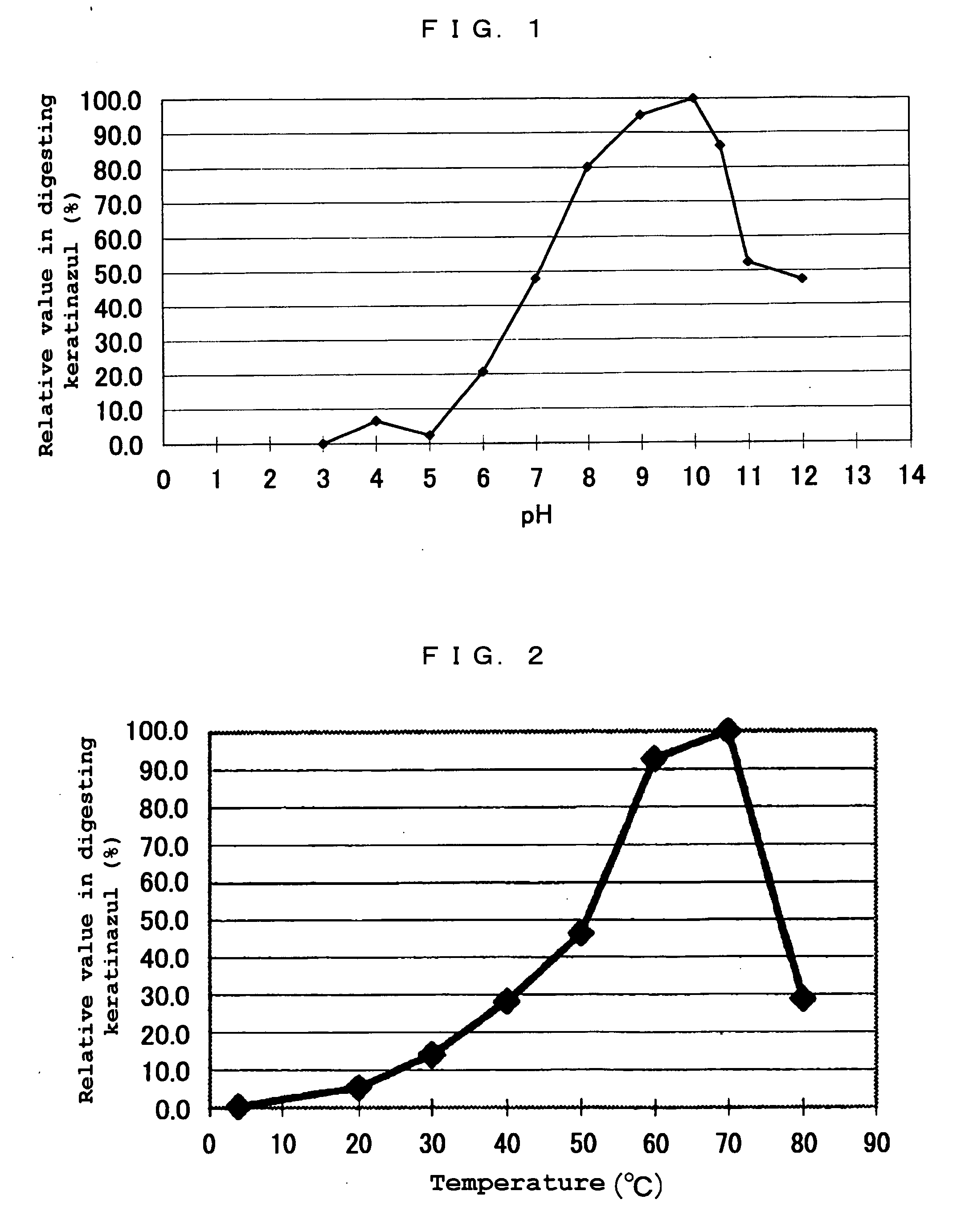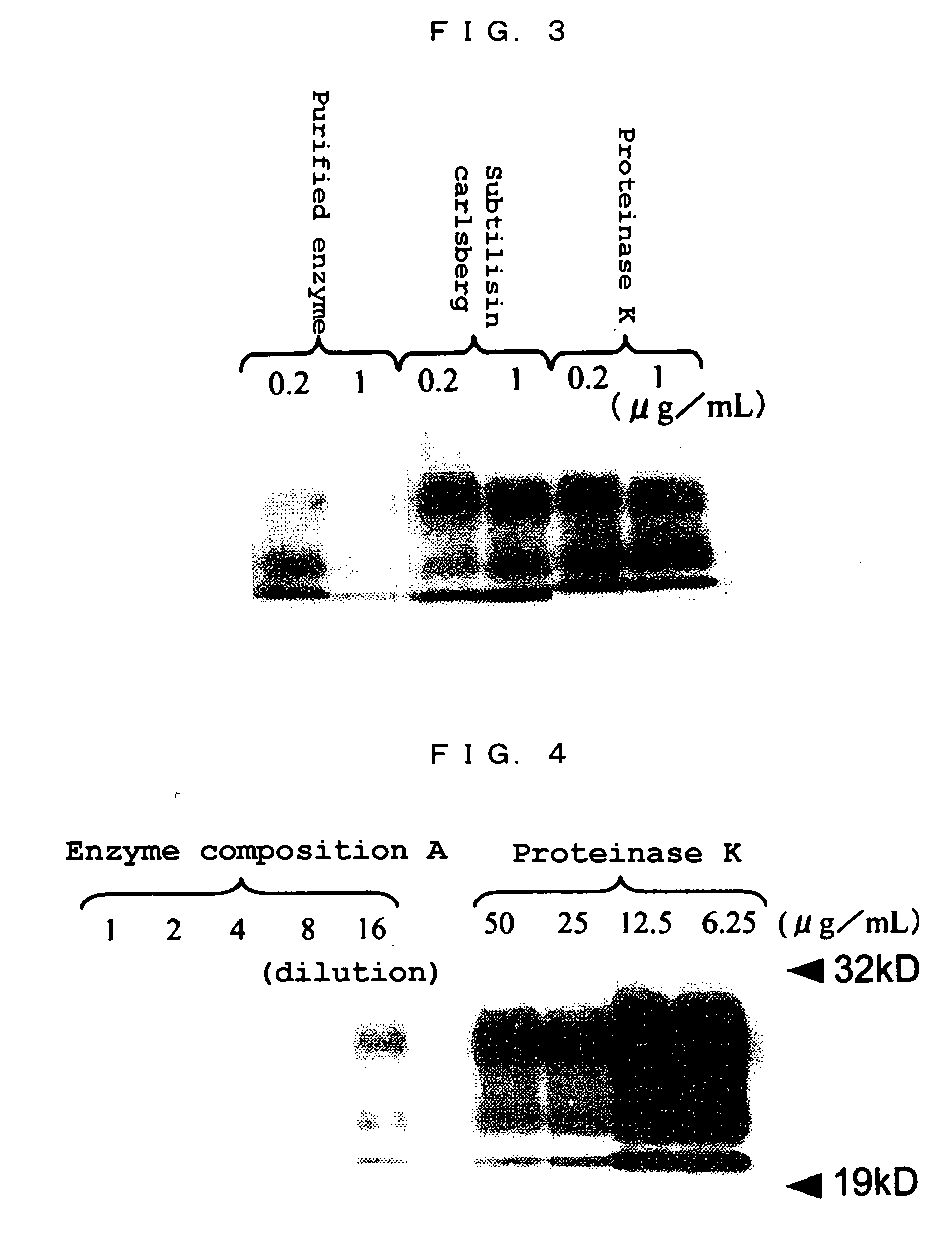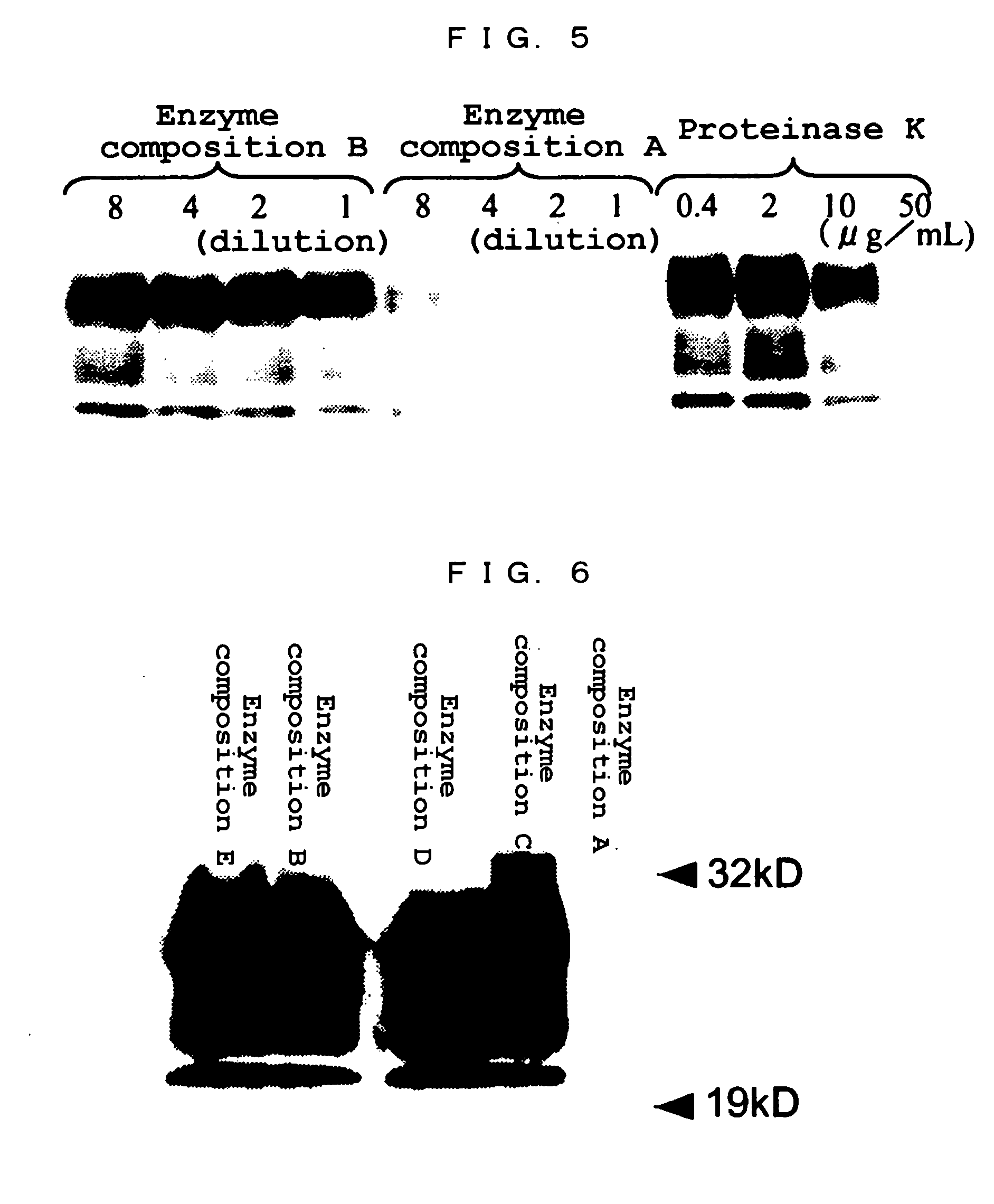Method of degrading hardly degradable protein
a protein and protein technology, applied in the field of protein digesting agents, can solve the problems of difficult to carry out the method in common facilities, complicated two-step procedures, and extremely serious diseases of bse, and achieve the effect of low cost and high activity of digesting
- Summary
- Abstract
- Description
- Claims
- Application Information
AI Technical Summary
Benefits of technology
Problems solved by technology
Method used
Image
Examples
example 1
Preparation of Purified Enzyme
[0129] In this example, cultivation and purification were carried out to obtain a purified enzyme used in the present invention as follows.
[0130] Culture medium A [1% polypeptone (Wako Pure Chemical Industries), 0.2% yeast extract (Difco), and 0.1% magnesium sulfate heptahydrate (Wako Pure Chemical Industries)(pH 7.0)] was autoclaved by a conventional method, and the medium A (200 mL) was inoculated with Bacillus licheniformis MSK-103 (FERM BP-08487). A cultivation was carried out at 37° C. under aeration and agitation for 72 hours. The resulting broth was centrifuged at 3000 G for 20 minutes to obtain a supernatant containing an enzyme used in the present invention.
[0131] The supernatant was concentrated 20-fold with an ultrafilter (5,000-molecular-weight cutoff) to obtain a concentrated supernatant containing the enzyme used in the present invention. The concentrated supernatant was filtered with a microfilter membrane (pore size=0.45 μm) to remove...
example 2
Confirmation of Physical and Chemical Properties of the Enzyme
(1) Activity and Substrate Specificity
[0132] Activities of the purified enzyme obtained in Example 1 to various substrates (casein, collagen, elastin, and keratin) were examined. The results are shown in Table 2.
[0133] As shown in Table 2, the enzyme exhibited a high activity of digesting each substrate, particularly keratin. In this connection, the “1 unit (U)” of digestion activities compared in Table 2 is defined as an amount of the enzyme which can develop ninhydrin corresponding to 1 μmol of glycine per minute, under the following conditions:
[0134] Concentration of the substrate: 0.5%
[0135] pH: 9.0
[0136] Temperature: 60° C.
TABLE 2SubstrateDigestion activity (U)casein326677 collagen36958 elastin10501 keratin7187
(2) Molecular Weight
[0137] An SDS-polyacrylamide gel electrophoresis using a 12% homogeneous gel (Tefco) was carried out to determine a molecular weight of the purified enzyme prepared in Example 1. ...
example 3
Cloning of Enzyme Gene and Determination of Amino Acid Sequence Thereof
[0142] In this example, a gene encoding the purified enzyme prepared in Example 1 was cloned, and the nucleotide sequence of the gene was determined to confirm the amino acid sequence of the enzyme.
[0143] To purify the enzyme, the culture medium A (see Example 1) was inoculated with Bacillus licheniformis MSK-103 (FERM BP-08487). A cultivation was carried out at 37° C. for 3 days, and the resulting broth was centrifuged to obtain a supernatant. The supernatant was concentrated approximately 20-fold with Pellicon XL (cut 5000; Millipore), and was adjusted to a solution containing 1 mol / L magnesium sulfate and 0.05 mol / L Tris-HCl (pH8.5). The prepared solution was applied to a phenyl Sepharose column (Phenyl Sepharose FF; low sub, 26×300 mm; Amersham Bioscience), and eluted by a linear concentration gradient with ammonium sulfate (1 mol / L to 0 mol / L) in a 0.05 mol / L Tris-HCl buffer (pH8.5), to obtain a fraction e...
PUM
| Property | Measurement | Unit |
|---|---|---|
| Temperature | aaaaa | aaaaa |
| Temperature | aaaaa | aaaaa |
| Fraction | aaaaa | aaaaa |
Abstract
Description
Claims
Application Information
 Login to View More
Login to View More - R&D
- Intellectual Property
- Life Sciences
- Materials
- Tech Scout
- Unparalleled Data Quality
- Higher Quality Content
- 60% Fewer Hallucinations
Browse by: Latest US Patents, China's latest patents, Technical Efficacy Thesaurus, Application Domain, Technology Topic, Popular Technical Reports.
© 2025 PatSnap. All rights reserved.Legal|Privacy policy|Modern Slavery Act Transparency Statement|Sitemap|About US| Contact US: help@patsnap.com



